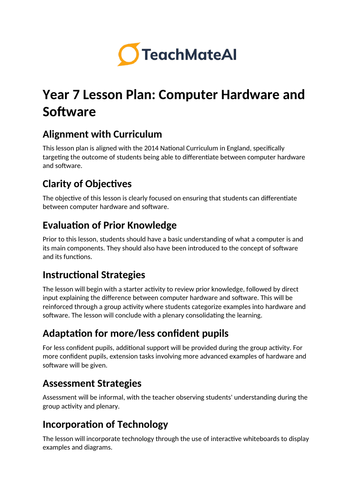
Introduction to Computing:
Differentiating between hardware and software.
An essential aspect of an introduction to computing is differentiating between hardware and software. These two terms represent distinct components of a computer system, each playing a crucial role in its functionality:
Hardware:
Definition: Hardware refers to the physical, tangible components of a computer system. These are the parts you can touch and see.
Examples: Central Processing Unit (CPU), memory (RAM), storage devices (Hard Disk Drives, Solid State Drives), motherboard, input devices (keyboard, mouse), output devices (monitor, printer), and peripheral devices (external hard drives, USB drives).
Software:
Definition: Software encompasses the intangible, non-physical instructions and programs that enable the computer to perform specific tasks. It is the set of instructions that tells the hardware what to do.
Examples: Operating systems (e.g., Windows, macOS, Linux), application software (word processors, web browsers, games), device drivers, and system utilities.
Differentiating Between Hardware and Software:
Nature:
Hardware: Physical and tangible components.
Software: Non-physical, instructions and programs.
Existence:
Hardware: Exists physically and can be touched.
Software: Exists virtually and cannot be touched.
Modification:
Hardware: Typically requires physical changes to be modified (e.g., adding more RAM).
Software: Can be easily modified through programming without changing physical components.
Examples:
Hardware: CPU, keyboard, printer.
Software: Windows operating system, Microsoft Word, Google Chrome.
Function:
Hardware: Provides the physical infrastructure and executes software.
Software: Instructs the hardware on how to perform specific tasks.
Dependency:
Hardware: Requires software to perform tasks.
Software: Requires hardware for execution.
Understanding the distinction between hardware and software is foundational in computing education. It helps users comprehend the roles each plays in the overall operation of a computer system and forms the basis for more advanced topics such as system architecture, programming, and troubleshooting.
Something went wrong, please try again later.
This resource hasn't been reviewed yet
To ensure quality for our reviews, only customers who have purchased this resource can review it
Report this resourceto let us know if it violates our terms and conditions.
Our customer service team will review your report and will be in touch.
